The Komodo Dragon (a.k.a. Komodo Monitor) is one of the most rare and exotic holdovers from the Eocene Epoch sub-period of the Paleogene Age on planet Earth between 36 million and 50 million years ago. Though not an actual dinosaur, it is a latter-day cousin to certain giant lizard-type creatures from the Mesozoic Era and Jurassic Period dating back as much as 250 million ago.

For many people, the first images they saw of the Komodo dragon may have been in an issue of National Geographic magazine or one of the “NAT GEO” television or online videos. Amazingly, the very first images of the Komodo in National Geographic Magazine date all the way back to August 1927. It showed up a second time in their September 1936 issue…and has been featured several more times since. It’s even taken star status on the cover of “NAT GEO Kids” magazine.
More recently, this giant monitor (Varanus Komodoensis) took the leading role in the nearly hour-long 2020 National Geographic Lost Worlds documentary entitled, “KOMODO…The Land of DRAGONS”. Typical of any “Nat Geo” production, this documentary beautifully and graphically took viewers into a world of nature and culture most have never seen or visited except via National Geographic. And its focus on the world of the Komodo dragon is truly as exotic as it gets.
Formerly of the Australian continent, the Komodo—along with certain other larger lizards and species—ended up migrating to the Indonesian archipelago chain of islands when the great continental landmasses of ancient Australia and Southeast Asia collided around 15 million years ago. Since then, the Komodo Dragon has reigned as the largest of monitor lizards. And it has been endemic to the steamy tropical forests of Indonesia for several million years; specifically, the four Indonesian islands of (namesake) Komodo, Rinca, Flores and Gili Montang.


It is fearlessly aggressive and ferociously carnivorous. The Komodo averages 150+ pounds but can reach up to 300 pounds, and it can exceed ten feet long; as much as half of that length being its tail. has very sharp serrated teeth and venomous saliva glands loaded with deadly toxins which assure that anything it attacks and bites is ultimately doomed…even if the prey manages to temporarily escape.
Although it rarely attacks humans, it has been known to. That said, its primary diet ranges from birds bird eggs to monkeys, wild boar, goats, pigs, deer, horses, water buffalo and—occasionally—other Komodo’s. So, on a hungry day, pretty much anything within its reach could likely become dinner. However, its digestive metabolism is so slow that an adult Komodo can survive on as few as twelve full meals a year. Still… it’s best to keep a wide berth from this post-Jurassic hand-me-down even if it has just fed.
Threatened by previously unregulated land development, the Komodo was in danger of possible extinction until the Indonesian government established the 700-square-mile Komodo National Park in 1980. Along with the Komodo dragon, this vast tropical preserve grants protected refuge for many rare land and air creatures as well as providing a rich marine setting to support whales, dolphins, sharks, sea turtles, coral reefs, sponges and over 1000 species of fish. And the Park has more recently come under global protection being designated as a UNESCO World Heritage site.
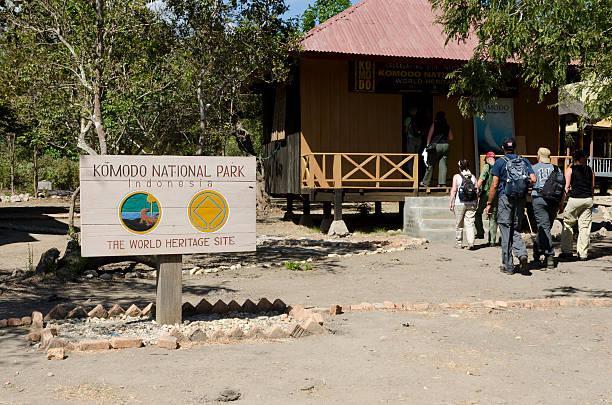
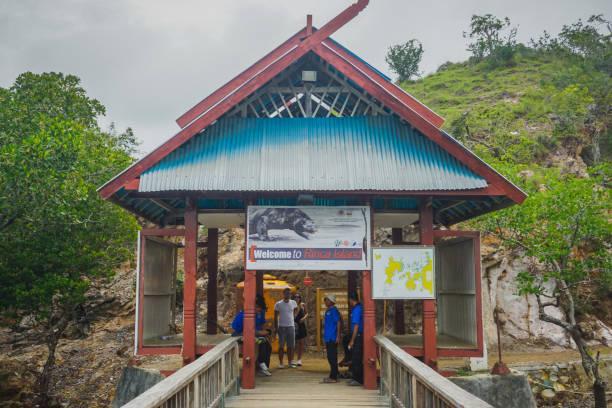
Thanks to the creation of Komodo National Park, the giant monitor Komodo dragon is just one of many exotic wildlife creatures found within the Indonesian islands. These islands are home to a land of grand and ancient temples, timeless cultural traditions, lush tropical rain forests, volcanoes, a rich agricultural industry and many truly rare natural wonders…all in sharp contrast to its global tourism trade, vast government-controlled commercial teak and mahogany plantations and the ultra-modern skylines and vibrant lifestyles of major metro-hubs like Jakarta, Surabaya, Bandung, Bekasi and Medan.
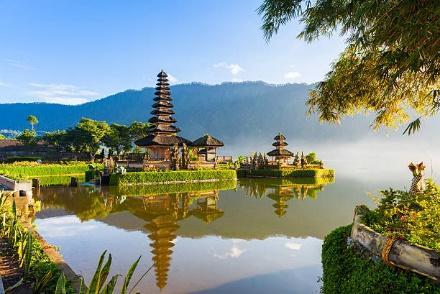




And thanks to the spectacular photo/video-journalistic creativity of National Geographic, you’re always able to enjoy “virtual expeditions” to Indonesia and many other global destinations. Their epic print and video explorations have helped bring a whole world of such wonders to countless would-be global adventures.
For many of us, National Geographic Magazine, its cable TV channel, and online features almost seem like they’ve been around forever. And that’s close to being the case. The original National Geographic Magazine was first published over 135 years ago on September 22, 1888. Its parent organization, the National Geographic Society, was founded only nine months earlier near the beginning of that year.
Back then the magazine was primarily conceived and printed as a “scholarly journal” and was only sent to
the Society’s existing 165 charter members. Today that 165 magazine distribution has exploded to 40
million people each month at last count. And, except for the cover’s iconic graphic borders and logo
type font, the first editions barely resembled the slick, in-depth and always intriguing, world renowned
and widely sought-after global travel and cultural publication it was ultimately to become.
The earliest editions were mostly “words on paper”, though certainly worthy of its lofty scholastic caliber,
journalistic excellence, and original editorial storyline.
Then, a mere 17 years later in 1905, the publishers had the clever idea to include actual photographs of their story subjects. That first photo enhanced issue included several full-page pictures of turn-of-the-century Tibet. Though only black & white photos were displayed at the time, their artistic and aesthetic quality was exceptional; an editorial move that set the tone and destiny of the magazine going forward.
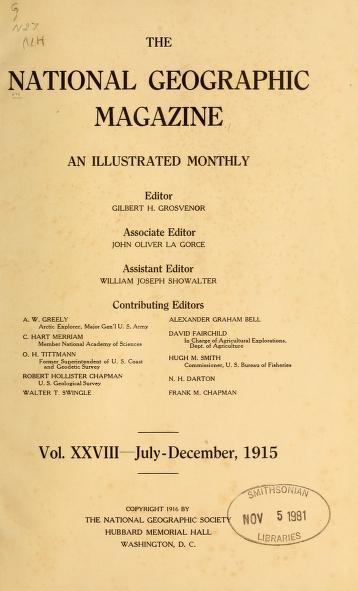

Five years later, in 1910, the first color photos began to grace the magazine’s pages; bringing greater life, meaning and reader-engagement to the publication. With that, the primarily text-oriented publication soon began to gain widespread acclaim for its large and extensive photo spreads and unique photojournalistic format. From then on, as they say, “the rest is history”.
Baby-boomer children and their parents may have first become acquainted with the magazine while thumbing through an issue resting on a table in a doctor’s waiting room; or in some other professional setting; and/or in school or public libraries. But, as it gained wider public appeal, more and more homes began to subscribe to the magazine. And, eventually, it became a common compliment to the family living room coffee table; not to mention a great source of information for many kid’s geography homework assignments.
During those early years, before the further advancement of color broadcast and cable television, before the internet and the wider public use of commercial cruise lines, the only way people might see and learn about other cultures and other parts of the globe would have been through movie newsreels, school and public libraries and classroom geography textbooks; textbooks that were skimpy on photos and heavy on text. Not very exciting or inviting reading. But, if you happened to have a copy of National Geographic Magazine in hand, the whole world became immediately accessible up close and personal and in panoramic color.
Those eye-capturing cover photos and the many beautifully crafted photo spreads drew readers into the magazine and kept them enthralled to the very last page. These were images that introduced readers to exotic people, places and stories from all around the world. People, cultures and places that many, otherwise, might never have visited or been exposed to. Yet, with each issue, those people, cultures, places and real-life stories were to unfold vividly before our very eyes as we flipped our way, page after page, through each issue.
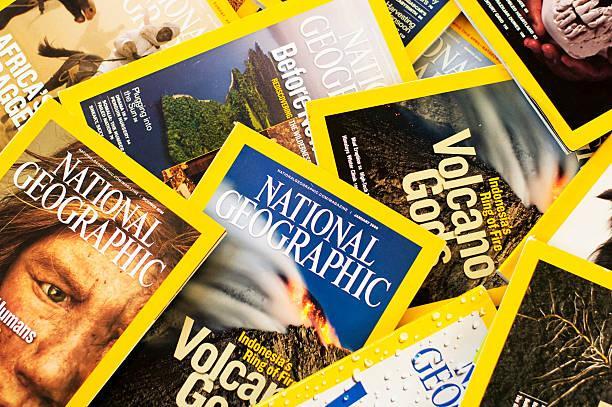
Today, more than half of the magazine’s pages are and/or include photographs and illustrations. Since the magazine’s beginnings, its dramatic cover and interior story pages have carried us through time, chronicling in words and images every major event, every major discovery, every major exploration and every historic milestone in the evolution of our global family, our global cultures, our global tragedies and our global victories, our personal sorrows and our personal triumphs. Tracing our planet, our solar system, our galaxy and beyond; from the very moment our universe began, through the shifting continental plates, through ancient prehistoric civilizations up to our present day and even peering far into the future.
That’s always been the intrigue of National Geographic. Its magazine and video programming have carried us everywhere answering Life’s age-old quest for adventure and greater knowledge of who, what, why, where, and how far we can go.
As the National Geographic Society and its subsidiaries have evolved, the magazine was moved to the National Geographic Partners in 2015; an entity that 21st Century Fox held by a controlling interest of 73%. Then, in December of 2017, the Walt Disney Company (a.k.a. “Disney”) acquired 21st Century Fox; an acquisition that included all interest in National Geographic Partners. Upon completion of that purchase in March 2019, the NG Publishing divisional operation was transferred to Disney Publishing Worldwide.
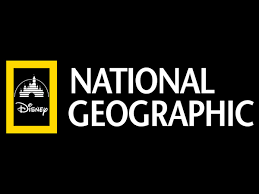

Upon reflection, this marriage of National Geographic Partners and, ultimately, Disney seems to be an ideal fit. Disney long ago produced numerous nature and travel films. These were often shorter pieces that would accompany episodic and full feature programming on Disney TV programming.
Throughout its evolution from that first actual photo-inclusive issue in 1905 all the way through its partnership with Disney—and whether via print or video—the one constant of National Geographic has been those amazing stories and photos of amazing lands, cultures, creatures, and worlds. And, as you read those stories, marveled at those photos and viewed those spellbinding graphic videos on your TV, PC or phone…haven’t you often wished you could just magically jump right into that scene, join a real expedition to that very place and experience that same heightened level of adventure in the moment, in person and in real time…and right along with an actual National Geographic team? Well…you can!
For example, let’s say you’d like to explore the above-mentioned Indonesian islands, tour Komodo National Park, visit all Indonesia’s many historic and exotic far-eastern destinations and enjoy the same heightened level of adventure as you’ve only “virtually” done via National Geographic’s media sources… How do you make that happen?
It’s called Lindblad Expeditions. And you can have that adventure in full National Geographic splendor as part of a bona fide NAT GEO expedition courtesy of Lindblad Expeditions aboard one of their official National Geographic cruise liners, the ORION.

This luxurious Lindblad National Geographic Orion can take you to Indonesia, Australia and the vast South Pacific as well as at least 16 other amazing global destinations. It features 53 elegant cabins—all with ocean views—modern private facilities, climate controls, flat-screen TV’s, all mobile device connections including ethernet, Wi-Fi and USB ports and all the comforts you’d expect from a true luxury liner. Some cabins even have French balconies.
Your meals are served in the main dining room and/or—weather permitting—you may opt for their outdoor café for great views plus a more casual atmosphere while mingling with other guests, relaxed in comfort courtesy of Westminster Teak’s luxurious Barbuda Captain chairs and other furnishings including their Montserrat table and stylish Palazzo Receptacle. In fact, since these teak pieces so perfectly suit the open-sea air setting of on-deck socializing, some of the other Lindblad National Geographic fleet ships also feature a rich assortment of Westminster Teak furnishings.


“We couldn’t be prouder than to have Lindblad Expeditions choose our furnishings for on board their prestigious National Geographic ships. Several of our Montserrat, Somerset, Veranda and Palazzo pieces have found homes on their National Geographic Endurance, the Sea Lion, the Sea Bird and, of course, the Orion” notes Frederick Fluchel, CMO of Westminster Teak, Inc.
“Not only are our designs precisely engineered for style, elegance, comfort, and durability, but our strictly Eco-Friendly harvested Grade A teak wood furnishings fall right in line with Lindblad’s philosophy of protecting and preserving our Earth’s natural resources and environment. So, to be associated with a company like Lindblad Expeditions and ships like the regal Orion is an ideal fit for us,” added Fluchel.

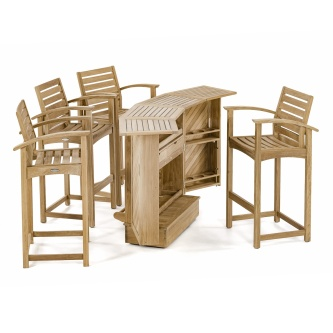

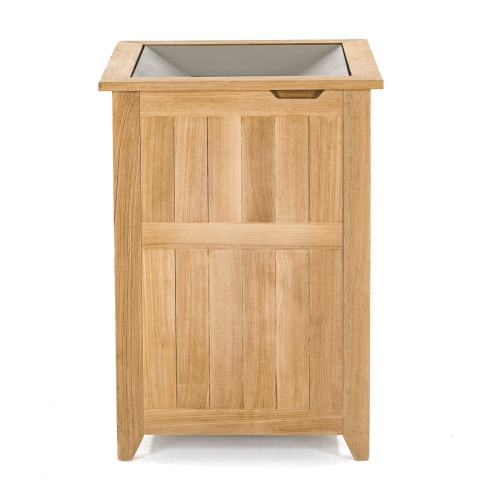

With all its grand splendor, the Orion’s on-board atmosphere is always comfortable and spirited, assuring guests a fun, informal and friendly experience as you might enjoy at your favorite dinner or social club. And, when visiting warmer destinations such as the South Pacific, the Orion’s expansive outdoor deck space invites passengers outside to enjoy balmy breezes, panoramic vistas, and personal interaction with an abundance of both avian and marine life.
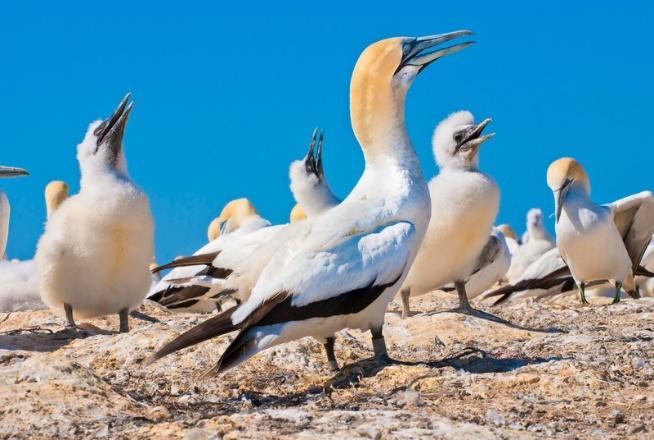

But the Lindblad Orion isn't just another pretty face. It is also a true “Lord of the Sea”; a ruggedly built, global exploration vessel designed to (as borrowed and paraphrased from the iconic Star Trek opening line) “explore strange new worlds, to seek out new life and new civilizations, to boldly go where few have ever gone before.”…or might ever try to go.
This ship is engineered with the latest navigational equipment and technologies to safely travel virtually anywhere on ocean waters…even when those waters are unchartered. Its high ice-class rating makes it sturdy enough to reach and explore frigid, ice-capped polar regions.
At the same time, the Orion’s exceptional elevated maneuverability also enables it to reach deep into those ocean-accessible and intriguing inshore waters, secluded bays and snake-like rivers that bring you face-to-face with local cultures and natural wonders.

And, piloting the gracious Orion from its impressive helm, is a uniquely experienced crew who are well-known for their skills at commanding large ocean liners such as this through intricate operations that others could and would never attempt. In fact, the Orion boasts the distinction of having navigated the farthest south of any other ship in the Lindblad Expeditions-National Geographics fleet.


Like all Lindblad ships, the Orion is built to exceed ordinary limits, to break boundaries, to search-out both the known and the nether regions, to fulfill the true explorer’s spirit. Its quest is to venture deep into those beautiful, spectacular, and nearly untamable parts of our world; secluded regions that capture imaginations and draw the greatest international scientists and National Geographic photojournalists to discover and document lands where the raw and exotic wonders of nature live and thrive.

The Lindblad Orion will carry you—along with actual National Geographic explorers and photographers—on authentic global adventures that include all the excitement and playful pastimes of a luxury cruise vacation plus all the exhilaration and rare rewards of being part of that NAT GEO team of explorers. And, when venturing into those more isolated and remote regions of the world, your Lindblad NG leaders will show you how to tread lightly, cautiously, and almost reverently so as not to spoil “the unspoiled” or disturb “the not-to-be-disturbed”; and to barely leave a trace of your having passed this way. You’ll visit places teeming with life in immeasurable quantities and witness wildlife that makes the word, “wild” seem tame. Such is the legacy of the Orion.
If that isn’t impressive enough, keep in mind that the Orion is just one of 16 great ships in the awesome Lindblad fleet; sailing around and across the globe bound for dozens of incredible destinations and unparalleled personal adventures. Along with the Orion, their nine official National Geographic ships include the Explorer, the Endeavor, the Endeavor II, the Islander, the Sea Bird, the Sea Lion, the Venture, and the Quest.

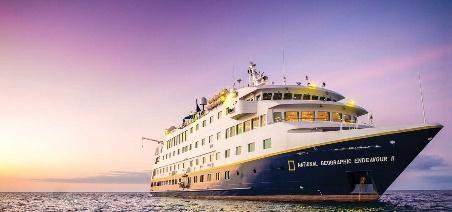

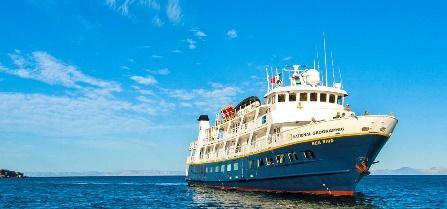
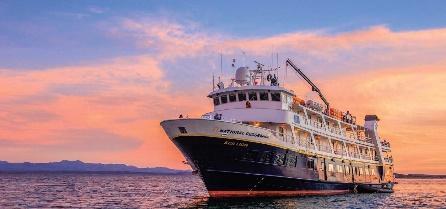
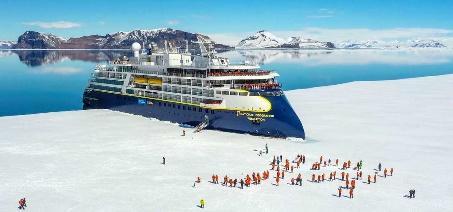
To fully appreciate the link between Linblad and National Geographic, it might be of interest to briefly recall the birth of “modern-day” commercial cruise liners.
The earliest predecessor to so-called “leisure” cruising began in 1840 with a Peninsular & Oriental Steam Navigation Company steamship that carried mail to Alexandria, Egypt by way of Gibraltar and Malta. Four years later it started offering public “sea tours” to several of those same destinations plus such new ones as Athens, Greece, and Constantinople.
There was also the Francesco of Sicily which sailed from Naples around Italy, Malta and many of the Greek islands. But this ship catered exclusively to European aristocracy. Average citizens—even wealthy ones—were not permitted on these cruises. And, then there was the Augusta Victoria of German which cruised the Mediterranean and the Near East in the late 1800’s and sparked the concept of luxury appointed “floating hotels”. These examples marked a new trend for larger ships built specifically for commercial cruises. And, today, there are over 300 cruise ships operating around the world with a combined passenger capacity of over 500,000 global sea travelers.
However, the first truly commercial luxury liner of any historical significance designed exclusively for the ultra-wealthy public dates as far back as 1901 with the Prinzessin Victoria Luise; named after Princess Victoria Louise of Prussia, the only daughter and the last child of Wilhelm II, German Emperor, and Augusta Victoria of Schleswig-Holstein. She lived from 1892 till 1980. The Princess was considered especially beautiful in her time and, as a result, had a total of three ships named for her as well as one zeppelin.

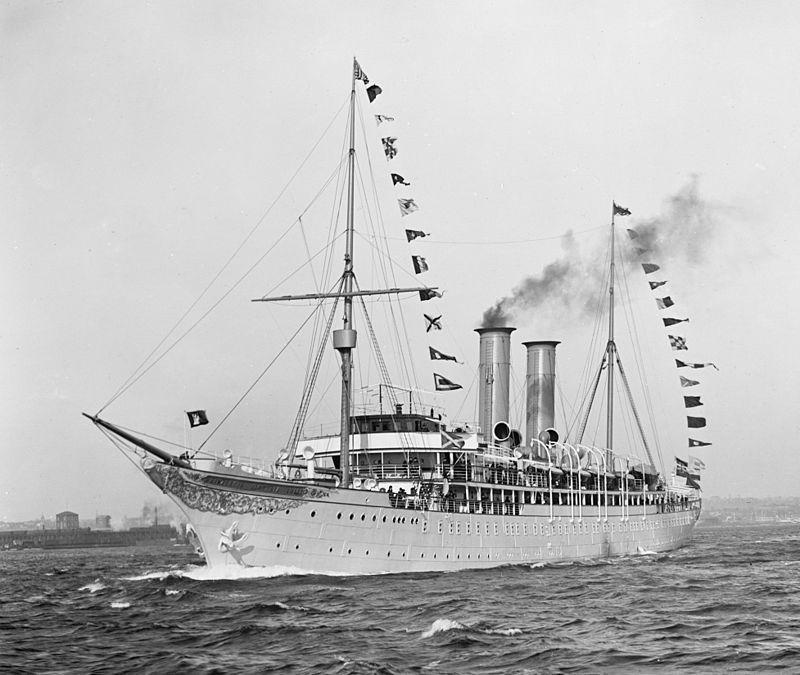
Her namesake and first-of-its-kind cruise liner was built by the American-Hamburg Company. It sailed from Hamburg, Germany to New York harbor that year carrying 120 passengers plus her crew. This four-expansion steam engine ship boasted only first-class cabins, was luxuriously appointed, offered a library, a large gymnasium and ran at a stop speed of 15 knots.
It also featured a fully equipped photography darkroom designed to allow passengers and on-board professional photographers to showcase its glamorous accommodations, document its privileged passengers at play and chronicle its voyages.
Although the Prinzessin Victoria Luise unfortunately grounded on rocks off the coast of Jamaica five years later, its addition of an elaborate on-board photography darkroom and skilled photographers may have hinted at a future marriage between the early photojournalistic sea voyages of National Geographics and large commercial cruise liners such as has evolved with Lindblad Expeditions.
Lindblad Expeditions was the inspiration of its entrepreneurial founder, Lars-Eric Lindblad of Solna, Sweden just north of Stockholm. Born in 1927, Lars immigrated to the United States in 1951 and became an American citizen. In 1958 he founded Lindblad Travel. And then, at the ripe age of 39, and fascinated with the idea of sea-based global tourism and conservation, he pioneered commercial cruising expeditions in 1966 by chartering a ship and leading the first tourist-oriented voyage of 57 passengers to the southernmost region of the world…Antarctica. A year later he took another load of tourists to the Galapagos. Soon after he bought and ran his own ship, the MS Linblad Explorer.


According to the Lindblad Expeditions website bio, Lars is widely acknowledged as the “father of ecotourism”. He believed that, by taking people around the world, to see and experience its wonders first-hand and to observe the delicate balance of nature in the raw, the public would develop a deeper and more profound appreciation for the necessity to preserve and conserve that delicate balance.
And, true to form, Lars set the example by making sure that he, his crew, and passengers were always mindful to leave nature as they found it. As the Lindblad guiding principle goes, “We embrace the leave-no-trace philosophy, ‘Take only photographs, leave only footprints.’ While we have a strict no-collection policy about the places we go—no shells, no animal fur/feathers, no rocks, no sticks, etc., there is an exception made to the occasional beach trash cleanup.”
Lars’ tours and world-recognized legacy expanded over the years to include the Falkland Islands, Seychelles, Newfoundland, Japan and far beyond as his calling to combine global tourism with global preservation also expanded. Then, in the early 1970’s, his son and expert wildlife photographer, Sven-Olof Linblad, began to lead safaris to East Africa. Loving the close camaraderie and reflections offered around campfire gatherings by his naturalist safari companions, Sven always appreciated how the Linblad ships easily served as a traveling basecamp, allowing eco-explorers to see the world from any vantage point.
Sven furthered his father’s vision and legacy in 1979 by expanding the concept of “transformative travel experiences'' to every conceivable and reachable destination around the Earth. Sven managed to lead Lindblad Expeditions to develop the largest and most advanced fleet of tourism exploration ships in the world, pioneering expeditions to Baja, Polynesia, Costa Rica, Panama and deeper into Alaska and the Galapagos. At the same time, he has continued to build upon his father’s commitment to conservation by creating a 100% carbon-neutral operation and by raising millions of dollars that get poured right back into pro-active eco-development projects throughout the many destinations touched by Lindblad Expeditions.

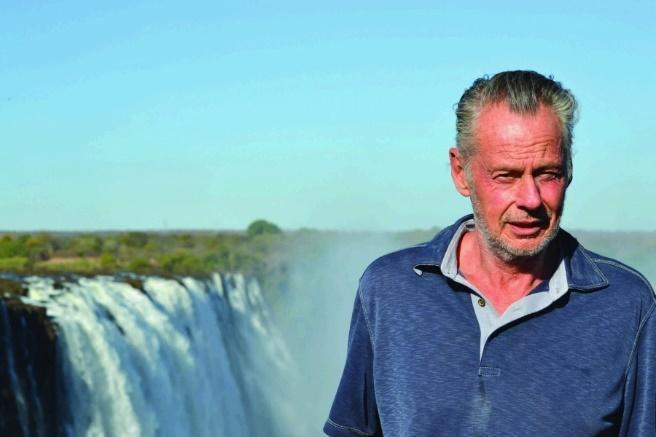
In 2004, Lindblad Expeditions formed an official partnership with the National Geographic Society. And, as noted on the Linblad website, this began “an alliance of two exploration pioneers in an innovative program to remote and pristine destinations around the globe. We work in tandem to produce educational marine expeditions to inspire travelers to explore and care about the planet, and to promote conservation and sustainable tourism around the world. The Lindblad Expeditions fleet also serves as a platform for a collection of researchers from the Society to cost-effectively study the regions we explore.”
This unique and visionary relationship between Lindblad Expeditions and National Geographic adds a whole new level of rare and extraordinary experiences for those true adventurers-at-heart who are inspired to combine a luxury cruise to exotic global destinations with the real-world excitement of an authentic NAT GEO exploration.
But, as noted above, Lindblad Expeditions boasts 16 remarkable ships in their line. In addition to their nine Lindblad National Geographic ships, their remaining fleet includes seven magnificent sail and rudder-engine ships. These beauties ride the sea and inland waters in classic style and help take guests to other exotic destinations where access is ideally suited for these vessels.
Among those are the Oberoi Philae—a perfect ship for cruising Egypt’s ancient Nile River; the Delphin II—especially suited for touring the Amazon and Peru; the Sea Cloud II—when visiting the scenic shores of Croatia and Italy; the Lord of the Glens—for reaching up into the North Atlantic Sea and the Scottish Highlands; and the Jahan—ideal for venturing up the Mekong River into Vietnam and Cambodia.
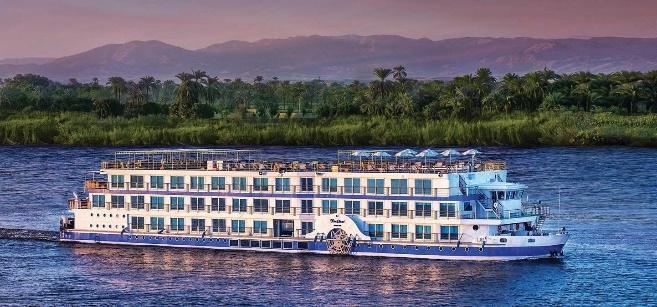

And then there’s graceful Lindblad Sea Cloud—a most elegant sailing ship, originally named the “Blue Lagoon” by its original owners, the world-famous socialite/businesswoman and heiress, Marjorie Merriweather Post and her then husband, global finance tycoon and investment legend, E.F. Hutton. This beautiful, full-rigged sailboat is the ideal ship for sailing the blue and pristine waters of the Caribbean and the Mediterranean.

(PHOTOS/ OBEROI PHILAE, LINDBLAD DELFIN II & SEA CLOUD/COURTESY LINDBLAD)
The stunning Lindblad Sea Cloud—inspired by the golden age of seafaring—carries guests in refined luxury and elegant style to old-world Mediterranean destinations such as Spain and Corsica, Malta and Sardinia, Sicily and the Greek Isles…or enchanting Caribbean Island ports such as Guadeloupe, Martinique, St. Lucia and Barbados.
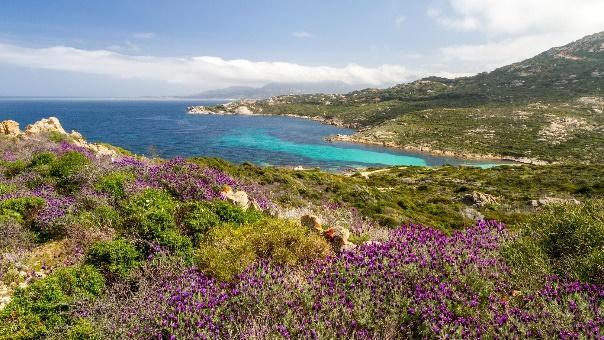
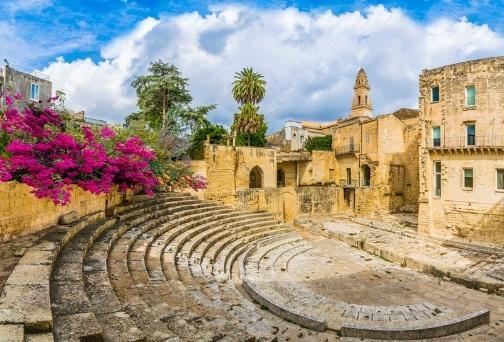
The historic four-masted Sea Cloud features plush dining room settings, 30 luxury, outside cabins with period-style furnishings on the main deck and modern stylish furnishing on the promenade and captain’s deck.


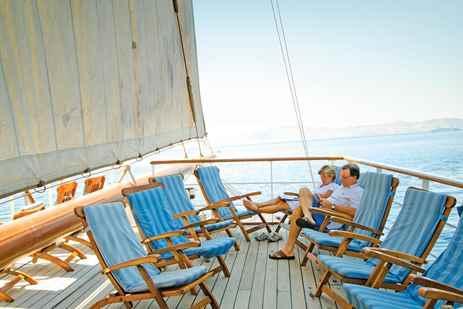
You can launch your epic adventures aboard one of Lindblad Expeditions’ regal National Geographic cruise liners or one of their classic old-world ships. Choose from such dramatic destinations as the Amazon, Alaska, both Arctics, the Caribbean, Egypt, Europe and the British Isles, Galapagos, Iceland, Japan, Patagonia, Peru, Scotland, the aforementioned Indonesia Papua/New Guinea options plus Vietnam and Cambodia …just to name a few. There are many, many more. And, within those choices, are a rich variety of packages to help customize your quest for the amazing. Simply choose your itinerary, book your cruise, and experience your own real-time NAT GEO adventure up close and personal!
In addition to all the luxury amenities your Lindblad Expeditions ships offer, plus all the awe-inspiring “worlds” you’ll discover, a vast parade of rich cultures will open up before you. Many of the cruises include both on-board live music and entertainment as well as onshore local indigenous musicians, dancers and pageantry.
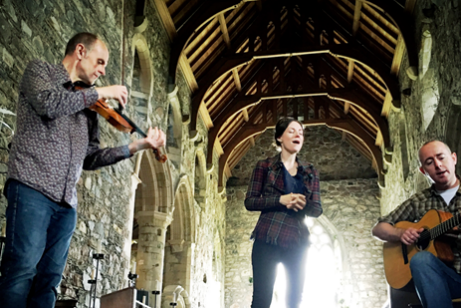


Plus, if you’re a professional or enthusiastic amateur photographer, there are unending opportunities—including special photo expeditions—that are assisted by National Geographic photography experts to help you to capture amazing sights while on board, while rafting to the polar edges of the north or while trekking across challenging terrains to witness and experience Nature’s many in-the-wild wonders.
So, if you’re eager to venture near horned-tooth narwhal whales breaching through the ice in the Arctic waters of Canada and Greenland; climb the rugged terrain of Iceland to the edge of its eruptive volcanic lava streams; snorkel amongst schools of rainbow-colored tropical life spiraling in vast waves through living coral reefs of western Australia; go on safari through South Africa’s 370+ square mile Hluhluwe-iMfolozi Park to witness up-close rhinos, elephants, leopards, lions and zebras living free and protected ; or trek through the jungles of Indonesia to tread just near enough to see that fierce Komodo Dragon… answer the call of the wild and begin your adventure at www.expeditions.com.





The continuing legacy of Lindblad Expeditions and its National Geographic partnership is in response to life's age-old quest for adventure and greater knowledge of who, what and where we are on this planet and within this universe. Or, in the words of Sven-Olof Linblad, “We see ourselves as far more than a travel company. We are a conduit—to exhilaration. To the feeling you get when you see something wild and unexpected, or rare and beautiful.”










